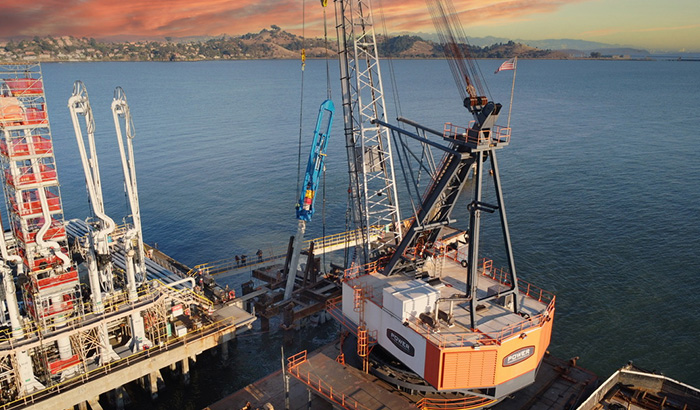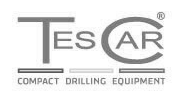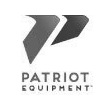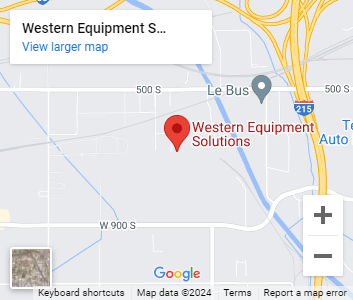Choosing the right foundation method is crucial for any structure’s stability and durability. Drilled shafts and driven piles are two key techniques, each with its own set of strengths and ideal applications.
In this blog, we’ll compare these methods, highlighting their advantages and helping you understand when to choose one over the other. Whether you’re tackling a large-scale infrastructure project or a small build, this guide will help equip you with the knowledge to select the best foundation solution for your needs.
Let’s dive into the world of drilled shafts and driven piles and discover which method best suits your next project. We’ll start by examining what drilled shifts and driven piles are individually and then compare them.
WHAT ARE DRILLED SHAFTS?
Drilled shafts are deep foundations used to support structures with large axial and lateral loads. Here’s a closer look at what they entail:
Construction Process
To construct a drilled shaft, drill a large hole into the ground, then fill it with concrete and reinforcing steel. You have the option to create a drilled shaft with a variety of tools including but not limited to Rock Augers, Dirt Augers, Core Barrels, Drilling Buckets, and Casing.
Versatility In Application
You can drill these shafts to great depths and in a range of diameters, making them versatile for different structures, such as buildings, bridges, towers, and industrial complexes.
SUITABILITY FOR VARIOUS SOIL CONDITIONS
Drilled shafts are suitable for a wide range of soil conditions, including soft soil and rock. Design the drilled shaft to bear loads by end-bearing on rock, friction along the shaft in soil, or a combination of both.


WHAT ARE THE ADVANTAGES OF DRILLED SHAFTS?
High Load-Bearing Capacity
Drilled shafts are renowned for their exceptional ability to support substantial axial and lateral loads, making them essential for supporting large structures like high-rise buildings, bridges, and industrial machinery.
Minimal Vibration And Noise
The installation process is relatively quiet and produces minimal vibration, which is exactly what you want in urban settings or near sensitive structures where disturbance needs to be minimized.
Suitable For Limited Access Areas
You’re able to install drilled shafts in constrained spaces or locations with limited access, providing a viable foundation solution where other methods might not be feasible.
CHALLENGES AND LIMITATIONS
Despite their numerous advantages, drilled shafts also come with specific challenges and limitations that need to be considered:
Specialized Equipment And Expertise
Constructing drilled shafts requires specialized drilling equipment and skilled operators. The drilling process is complex and requires precise installation, so contractors must have the right expertise and experience, which sometimes limits the pool of available service providers.
Groundwater And Soil Stabilization
In areas with high groundwater levels or unstable soil conditions, drilled shafts are a challenge. Water ingress into the excavation might cause soil instability and collapse, complicating the drilling process. This may necessitate casing or polymer to stabilize the hole, adding to the complexity and cost of the project.
Cost Considerations
While drilled shafts are cost-effective in the long run due to their durability and load-bearing capacity, the initial investment is higher than other foundation methods. The cost of specialized equipment, materials like concrete and steel reinforcement, and the expertise required often make drilled shafts a more expensive option upfront.
Time-Consuming Installation
Drilling, installing reinforcement, and pouring concrete for drilled shafts is time-consuming, especially for deep or large-diameter shafts. This longer installation time could impact project timelines, particularly in time-sensitive projects.
WHAT ARE DRIVEN PILES?
Driven piles are a type of deep foundation element contractors use to support structures by transferring the load through weak soils to stronger, deeper soils or rock layers. Construction teams install these piles by driving them into the ground using heavy machinery that applies impact force or vibration.
The piles, which you make of steel, concrete, timber, or composite materials, provide a sturdy, reliable foundation for various types of construction projects, including buildings, bridges, and piers. The driving process compacts the surrounding soil, often increasing its density and bearing capacity, which adds to the overall stability of the foundation system.
Driven piles are known for their rapid installation and immediate load-bearing capability, making them a popular choice for projects with tight schedules or where soil conditions are challenging.


WHAT ARE THE ADVANTAGES OF DRIVEN PILES?
Driven piles offer several advantages as a foundation solution for construction projects:
Rapid Installation
Driven piles allow for quick installation, enabling immediate load-bearing capacity. This swift process is particularly beneficial for projects with tight deadlines, as it allows construction to proceed without waiting for concrete to cure.
Immediate Load Support
Once installed, driven piles immediately bear loads, providing instant foundation support. This feature is crucial for fast-paced construction environments and helps maintain project timelines.
Versatility In Materials And Design
You’ll make driven piles from various materials, including steel, concrete, timber, and composites, offering flexibility to match each project’s specific needs and conditions. You may also tailor their design to suit different load requirements and soil types.
Predictability And Reliability
The performance of driven piles is well-documented and predictable, based on historical data and extensive use in the field. This predictability allows for reliable design and planning, reducing the risk of unexpected foundation issues.
Minimal Spoils
Driven pile installation produces minimal spoils, reducing the need for handling and disposal of excess soil. This is particularly advantageous in urban areas or environmentally sensitive sites where spoil removal is often challenging and costly.
CHALLENGES AND LIMITATIONS
Driven piles, while advantageous in many construction scenarios, also present certain challenges and limitations:
Noise And Vibration
Driving piles into the ground generates significant noise and vibration, disruptive in populated or sensitive areas. These vibrations may also risk nearby structures, requiring careful consideration and mitigation measures.
Depth And Load Capacity Limitations
Driven piles may have limitations in terms of the depth they achieve and the load they support, especially when compared to other deep foundation methods like drilled shafts. In extremely dense or hard soil layers, achieving the desired depth or capacity might be challenging.
Material Damage
The driving process sometimes causes damage to the piles, particularly in the case of timber or concrete piles. This risk necessitates careful handling and quality control measures to ensure the integrity of the piles upon installation.
Soil Conditions
While driven piles are suitable for a variety of soil types, certain conditions, such as very dense soils, hard rock, boulders, or large obstructions, hinder their installation. In such cases, alternative foundation solutions may be more appropriate.
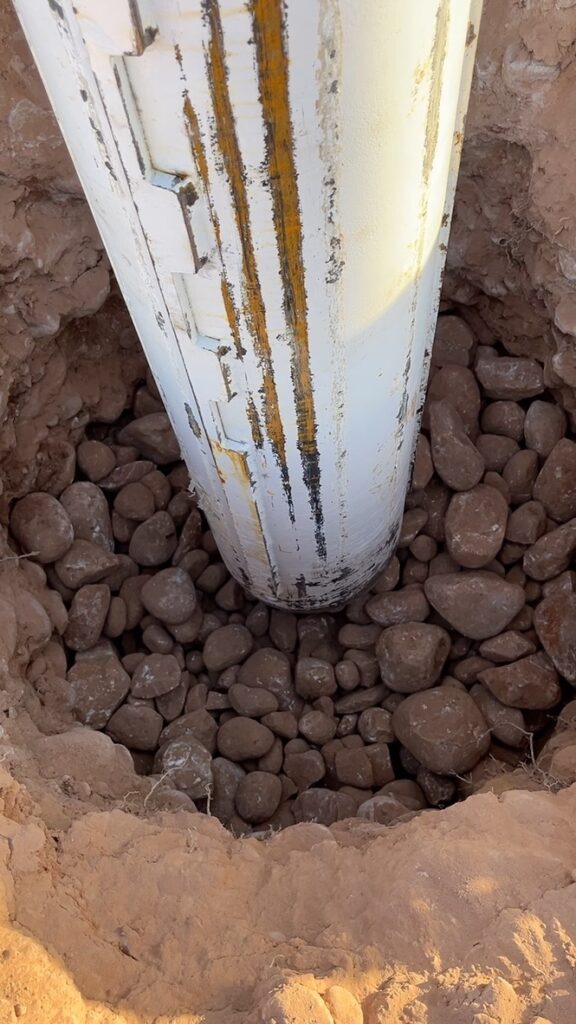

COMPARING DRILLED SHAFTS AND DRIVEN PILES
To compare drilled shafts and driven piles effectively, it’s important to consider various aspects, such as their application, suitability for different environments, installation processes, and overall impact on a project. Here’s a detailed comparison:
Application And Suitability
Drilled shafts
Drilled shafts are best suited for structures requiring deep foundations to transfer loads to stable soil layers or rock. They are ideal in urban environments or near sensitive structures due to their minimal vibration and noise during installation.
Driven piles
Driven piles are commonly used where you need rapid installation and immediate load-bearing capacity. They are versatile; use them in a variety of soil conditions, including soft soils and underwater applications.
Installation Process
Drilled shafts
Drilled shafts involve drilling a deep hole and filling it with concrete and reinforcement. The process requires specialized drilling equipment and takes longer, but it gives you greater depth and customization in diameter.
Driven piles
You install driven piles by hammering the piles into the ground using impact or vibration. This method is faster but generates more noise and vibration. This method is effective in compacting surrounding soil, which enhances stability.
Cost Implications
Drilled shafts
The initial investment might be higher due to the specialized equipment and materials required. However, they offer significant long-term value for heavy structures.
Driven piles
Driven piles may be more cost-effective for projects with shorter timelines or less stringent depth requirements.
Environmental Impact
Drilled shafts
Drilled shafts aren’t as disruptive when it comes to noise and vibration, making them preferable in sensitive areas. However, they produce spoils that need to be managed.
Driven piles
The driving process may disturb surrounding areas with noise and vibration but typically results in minimal spoil production, reducing waste management concerns.
Load Capacity And Depth
Drilled shafts
Drilled shafts reach greater depths and support larger loads, making them suitable for major structures like skyscrapers and bridges.
Driven piles
While effective for a wide range of projects, they might be limited by the depth they are able to achieve and the load they can support compared to drilled shafts.
The choice between drilled shafts and driven piles depends on the specific project requirements, including the load capacity needed, project timeline, environmental considerations, and budget constraints.
Both methods offer distinct advantages, but understanding their differences is crucial for making an informed decision that aligns with the project’s goals and site conditions.
WESTERN EQUIPMENT SOLUTIONS
Whether you’re leaning towards the precision of drilled shafts or the efficiency of driven piles for your next project, Western Equipment Solutions has you covered.
With our extensive range of top-quality ground engineering equipment and accessories, we’re equipped to support any ground engineering method you choose. Our expert team is on hand to provide tailored advice, ensuring you have the right tools for the job.
Don’t compromise on the foundation of your project. Visit Western Equipment Solutions today for all your ground engineering needs, and let us help you lay the groundwork for success.

